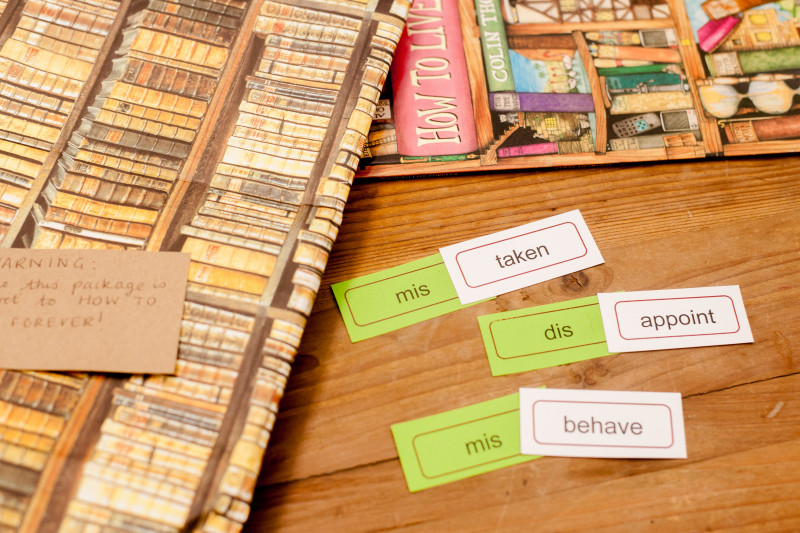Posted on: 26/08/2024
The 2014 Curriculum has posed many challenges for teachers and one of the most pressing is ensuring the breadth of coverage in spelling and vocabulary acquisition. There are a hundred words in each KS2 wordlist and multiple spelling rules to be taught across key stages. How do we ensure these are all taught in meaningful and creative ways? Add to this the fact that many children start school ‘word poor’, that this vocabulary deficit can dramatically widen as children develop, and the task seems insurmountable.
Research on this strategy has been shown to be less effective in supporting spelling than teaching rule-based strategies, such as word study approaches (Dymock & Nicholson, 2017; Fisher et al., 2007).


For a significant amount of children this strategy doesn’t work and even for the most diligent of children, the words learned are rarely transferred into their writing or the spellings into their long-term memory. A vital piece of the puzzle is missing and for the children who routinely do not do well in tests, their sense of being a poor speller may well be compounded.
This BERJ’s study suggests that many primary teachers in England feel they ‘over-rely on a limited range of strategies’ to teach spelling. If we combine this with a lack of cohesive spelling policies, training, research and pedagogical guidance from the National Curriculum, then it is a concern.
It is a concern that should be at the very heart of what teachers do as every subject has its own rich plethora of words and spellings to be learnt. We have to explicitly teach vocabulary and testing alone is not teaching. Alex Quigley in his book, Closing the Vocabulary Gap (2018), emphasises this point:
By closing the vocabulary gap for children in our classrooms with their peers, we can offer them the vital academic tools for school success, alongside the capability to communicate with confidence in the world beyond the school gate.
Whilst looking up definitions in a dictionary or synonyms in a thesaurus is an important skill, it is not enough to help children understand the nuances of meaning, the appropriate contexts and the underlying structure and history of a word. This is particularly pertinent in relation to Tier 2 vocabulary e.g. benevolent instead of kind; distraught instead of sad.
So we must move beyond the spelling by rote approach and towards a spelling by reason approach, teaching children the etymology and morphology of a word and allowing them to see these words used in multiple and relatable contexts. Children need to investigate patterns in these words, find rule breakers, see the words in context before practising them and applying them in their own writing.
Spelling Seeds provide many opportunities for children to investigate spellings, practise them and apply them in a short piece of writing, creating a comprehensive spelling by reason approach. All aspects of this tool are designed to work with our quality texts, alongside existing Writing Roots, helping teachers to bridge the gap between spelling and writing. Every book in Literacy Tree that has a Writing Root also has a Spelling Seed.
Let’s imagine we are teaching the rule:
The /ɪ/ sound spelt y elsewhere than at the end of words.
This is a spelling rule taught in Years 3 and 4 and with words like myth, crystal, Egypt, mystery, mystical and pyramid it cries out to be embedded within the context of ancient Egypt or ancient civilisations. Texts like The Story of Tutankhamun and Weslandia provide ideal contexts. Children can discover some mysterious hieroglyphics with clues to discover their hidden meanings. Can they add any of their own words to this puzzle? What do they notice that all these words have in common? How is the ‘y’ grapheme positioned in each work and how does this affect the sound?
When teaching the Ted Hughes’ text The Iron Man, we could begin with an investigation, where, to decipher the message of a radio transmission the children must un-jumble keys words. These key words are taken straight from the Year 3/4 word list and children can read them in a familiar, meaningful context.
We follow these investigations with an opportunity to practise the vocabulary. Games are an ideal vehicle as are mnemonic devices for remembering the trickier spellings. Words such as necessary or dessert can be tackled with the handy hooks one collar, two sleeves or two ss’s are something sweet. This is most effective if children come up with their own version of these, understanding and breaking down the vocabulary to fit with their own memories and associations.
Once they have these pieces in place, they have some of the essential building blocks to apply in writing. Application is a chance for them to embed the vocabulary in a written outcome, for example, a diary entry, character description or persuasive letter. Children could also go back to pieces of writing through the week, editing them to include some of the spelling words.
And there we have it. If ten minutes, three time a week can be dedicated to spelling and follow the investigate, practise, apply cycle (which could still sit alongside spelling lists and tests), then a fresh and meaningful approach to the teaching of spelling could emerge.
Posted in: Curriculum | Spelling